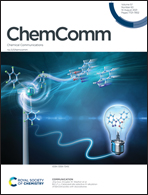Perfluoro-tert-butanol: a cornerstone for high performance fluorine-19 magnetic resonance imaging
Abstract
As a versatile quantification and tracking technology, 19F magnetic resonance imaging (19F MRI) provides quantitative “hot-spot” images without ionizing radiation, tissue depth limit, and background interference. However, the lack of suitable imaging agents severely hampers its clinical application. First, because the 19F signals are solely originated from imaging agents, the relatively low sensitivity of MRI technology requires high local 19F concentrations to generate images, which are often beyond the reach of many 19F MRI agents. Second, the peculiar physicochemical properties of many fluorinated compounds usually lead to low 19F signal intensity, tedious formulation, severe organ retention, etc. Therefore, the development of 19F MRI agents with high sensitivity and with suitable physicochemical and biological properties is of great importance. To this end, perfluoro-tert-butanol (PFTB), containing nine equivalent 19F and a modifiable hydroxyl group, has outperformed most perfluorocarbons as a valuable building block for high performance 19F MRI agents. Herein, we summarize the development and application of PFTB-based 19F MRI agents and analyze the strategies to improve their sensitivity and physicochemical and biological properties. In the context of PFC-based 19F MRI agents, we also discuss the challenges and prospects of PFTB-based 19F MRI agents.



 Please wait while we load your content...
Please wait while we load your content...